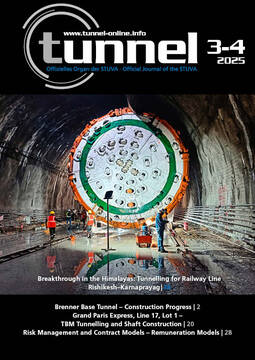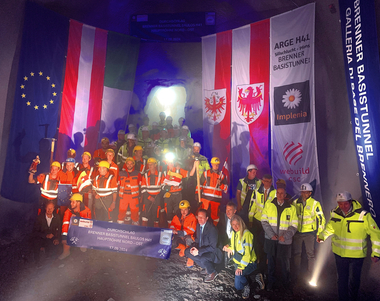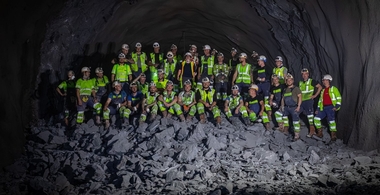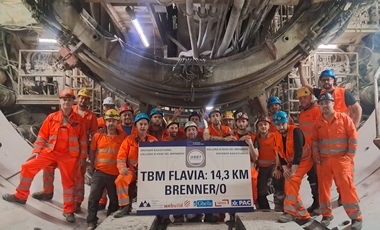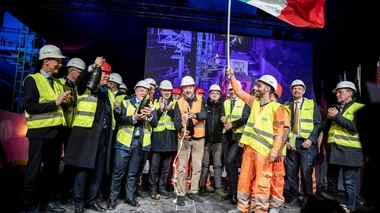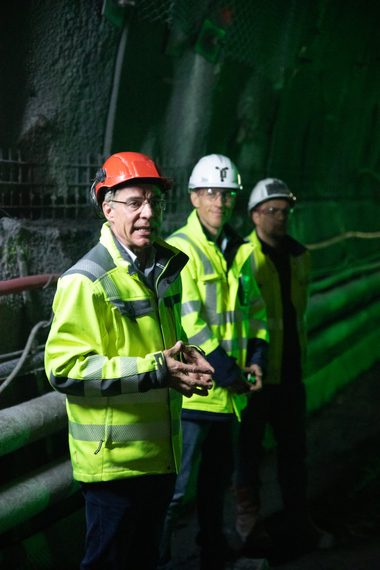Brenner Base Tunnel – Construction Progress, Summer 2025
The Brenner Base Tunnel (BBT) is a flat railway tunnel currently under construction that will connect two countries. It runs between Innsbruck (Austria) and Fortezza (Italy) and is 55 km long. In May 1994, a railway bypass, the so-called “Inntal Tunnel,” was opened south of Innsbruck. This 12.7 km long tunnel connects to the Brenner Base Tunnel.Passenger and freight trains traveling on this route therefore travel through the Inntal Tunnel for several kilometers in addition to the BBT. These 64 kilometers of tunnels will become the longest underground railway connection in the world.
The BBT consists of two 8.1 m wide tunnel tubes, which run single-track at a distance of 40–70 m. The two main tubes are connected by cross passages every 333 m. The total construction costs are estimated at around 10.5 billion euros. The Brenner Base Tunnel is scheduled to go into operation in 2032.
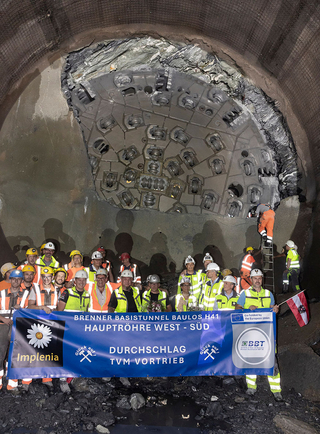 After around 26 months of tunnelling, TBM Ida completed the first breakthrough of the main tunnel bore on the Austrian side at the end of August 2025
After around 26 months of tunnelling, TBM Ida completed the first breakthrough of the main tunnel bore on the Austrian side at the end of August 2025
Credit/Quelle: BBT SE
First TBM Breakthrough in a Main Tunnel Bore in Austria
An important milestone for the cross-border railway infrastructure project, the Brenner Base Tunnel: After about 26 months of steady work, the tunnel boring machine (TBM) Ida has successfully achieved the first breakthrough of a main tunnel tube in the Austrian project section. The breakthrough point is located within the municipality of Navis (Wipptal), in the existing auxiliary drivage „IRIS“, which adjoins construction lot H53 Pfons-Brenner. In modern tunnelling, an auxiliary drivage is an important additional measure that supports the excavation of the main tunnel and secures the respective tunnel section in advance.
8400 Metres Through the Rock
Since its launch in June 2023, Ida has cut through 8400 metres of rock in the H41 Sill Gorge–Pfons construction lot. Ida is a tunnel boring machine (TBM) measuring approximately 160 metres in length, weighing 2420 tonnes and with a cutter head diameter of 10.4 metres. The excavation started from the Ahrental project section near Innsbruck in the western main tunnel heading south and ran, in part, through geologically extremely challenging zones.
TBM Lilia Scheduled to Arrive in Autumn
Ida‘s twin sister, the TBM known as Lilia, is expected to break through in the eastern main tunnel tube in autumn 2025. This completes the TBM excavation in the Sill Gorge–Pfons construction lot- another major step towards the completion of the Brenner Base Tunnel.
TBM Drives of the Main Tunnels in Italy Completed in May
At the “H61 Mules 2–3” construction lot of the Brenner Base Tunnel, the last of the Italian tunnel boring machines had successfully completed the mechanical excavation of the West Main Tunnel on May 2, 2025. The excavation of the two main tunnel tubes has thus been accomplished on the Italian project area.
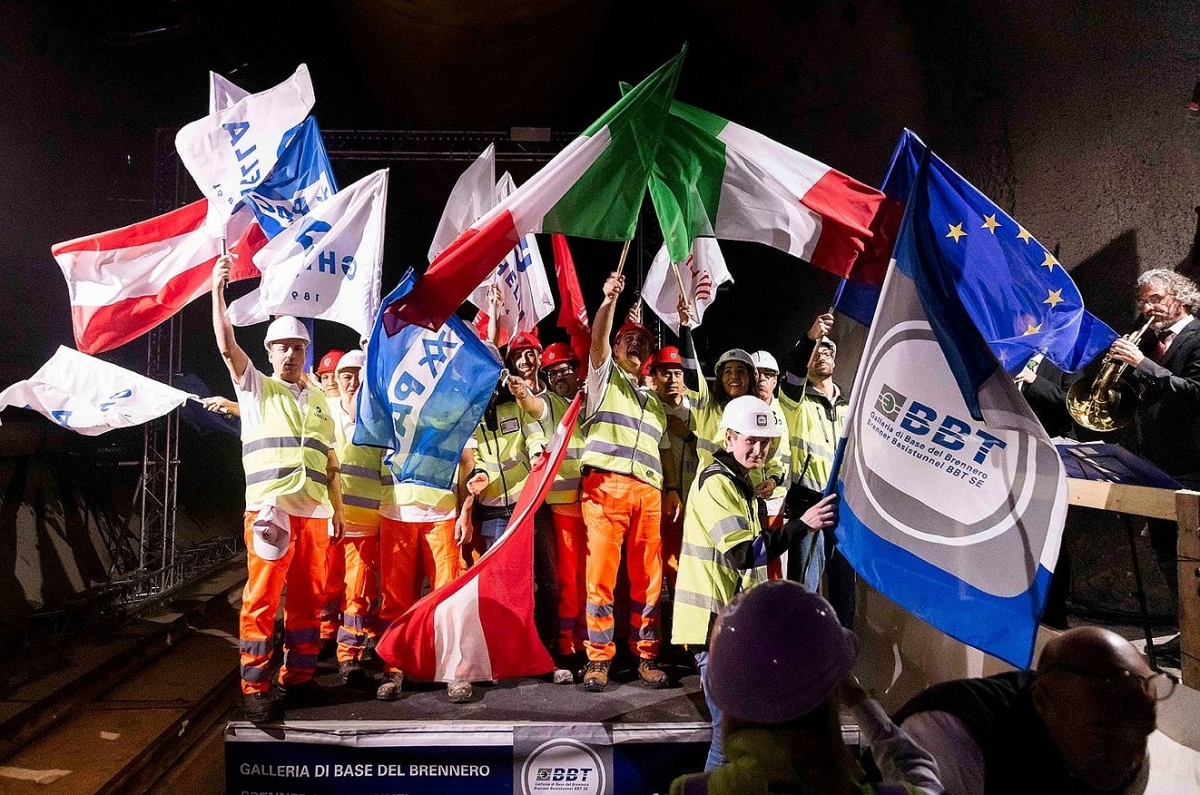 Completion of the western main tunnel on the Italian side of the Brenner Base Tunnel on May 2, 2025
Completion of the western main tunnel on the Italian side of the Brenner Base Tunnel on May 2, 2025
Credit/Quelle: BBT SE
Flavia, the last of three Herrenknecht machines, arrived at the national border at the Brenner Pass at a depth of around 1400 m and completed the drive in the western main tunnel for the H61 Mauls construction lot. Using two Double Shield TBMs with a diameter of 10.65 m, the miners of the joint venture between the companies Webuild, Ghella, P.A.C. and Cogeis excavated 14.3 km of the two main tubes. They mastered both high-strength rock and challenging geological fault zones. They used another Double Shield TBM with a diameter of 6.8 m to construct a service and rescue tunnel beneath the main tubes.
All participants celebrated this completion together, which once again emphasized the importance of the infrastructure project for the future of cross-border European mobility. First and foremost the TBM tunnelling team, who had accompanied Flavia on her long journey through the heart of the Alps.
65 000 Concrete Segments
TBM Flavia alone installed around 65 000 segments for the inner lining of the main tunnel. These precast concrete elements were manufactured using recycled tunnel excavation material. This allowed 30% of the excavated material to be recycled and the work to be carried out in line with the circular economy.
Two TBMs had already reached the state border before Flavia. Serena, the TBM that excavated most of the exploratory tunnel on the Italian side of the project, reached the Brenner Pass in November 2021. Virginia, Flavia‘s “twin”, arrived at the Brenner Pass in March 2023. Together, the three machines moving towards the Brenner Pass have excavated nearly 43 km of tunnel.
Breakthrough in the West Main Tunnel at Pfons–Brenner Construction Site
With the breakthrough in the western main tube of the Brenner Base Tunnel on May 31, 2025, another central section of the Austrian construction lot H53, Pfons–Brenner has been completed. The breakthrough took place north of the geologically challenging Hochstegen area, around 1200 m below the Padauner Kogel in the municipality of Steinach. The main tunnel east was already broken through in this area in early May 2025.
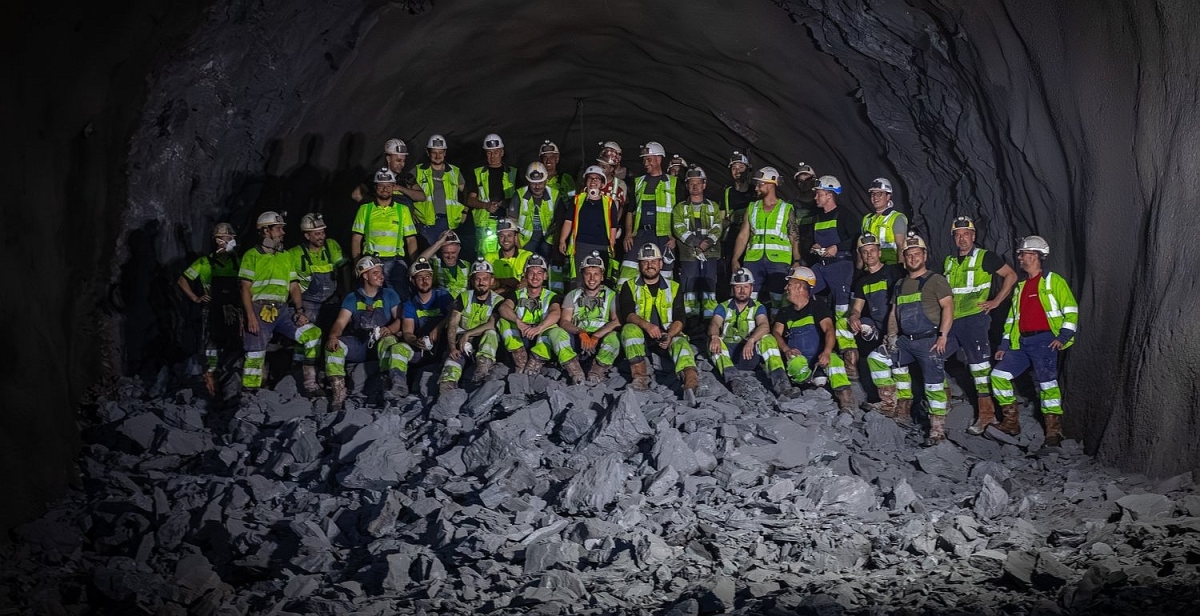 Breakthrough of the western main tunnel bore of the Brenner Base Tunnel on May 31, 2025, in the Austrian construction section Pfons–Brenner
Breakthrough of the western main tunnel bore of the Brenner Base Tunnel on May 31, 2025, in the Austrian construction section Pfons–Brenner
Credit/Quelle: BBT SE
For Michael Knapp, the project manager of the Pfons–Brenner construction lot, the breakthrough is another great success: “We have been working in a geologically challenging environment, but we succeeded once again. Our thanks go to the workers, surveyors, geotechnicians and contractors, and to all BBT SE employees, for their extraordinary efforts.”
Concrete Segment Production Has Ended in Ahrental for the Sill Gorge–Pfons Construction Site
On 19 July 2025, the last concrete segment was finished at the factory in Ahrental which made the prefabricated concrete elements for the nearby “H41 Sill Gorge–Pfons” construction site, for the Austrian stretch of the Brenner Base Tunnel.
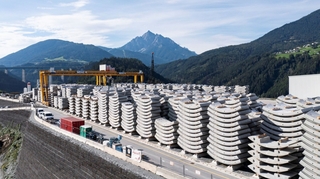 On July 19, 2025, the last segment left the production facility in construction lot H41 Sill Gorge–Pfons
On July 19, 2025, the last segment left the production facility in construction lot H41 Sill Gorge–Pfons
Credit/Quelle: BBT SE
The plant had gone into operations in February of 2023 and since then has produced just over 59 000 concrete segments, meaning a daily production rate of approximately 90 prefab shotcrete pieces. The segments are the final lining of the main rail tunnels and are laid by the TBMs, which besides the excavation also install the final tunnel lining.
The Ahrental construction site had no rail line for material supply. For this reason, the consortium Arge H41 chose to produce the segments directly on-site. Production was organised on a line thanks to an innovative set-up which divided the work into phases: moulding, reinforcement, shotcrete and curing. An internal transportation system ensured continuity, optimising timing and costing and guaranteeing high quality standards. After storage, the segments were transported into the mountain.
If the concrete segments had been produced elsewhere, transportation to the construction site would have required about 29 500 lorry trips. With this efficient and sustainable solution, only 3000 trips were necessary to supply construction materials and the reinforcement steel.
By Early July 2025, 200 Kilometers of the BBT Tunnel System Had Been Excavated
By early July 2025, significant progress could be announced with 200 kilometers of tunnel advanced: 87% of the total tunnel system to be excavated had thus been completed. The next major goal, the completion of the continuous underground connection between Italy and Austria, is getting closer.
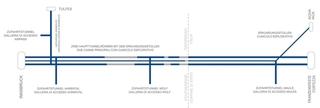 By early July 2025, 200 kilometers of the BBT tunnel system had been excavated (lines marked in blue = tunnelling completed)
By early July 2025, 200 kilometers of the BBT tunnel system had been excavated (lines marked in blue = tunnelling completed)
Credit/Quelle: BBT SE
Since the symbolic milestone of 100 kilometers of tunnel excavated in 2019, the large-scale project BBT has been progressing rapidly. All three Italian tunnel boring machines have already completed their excavation work up to the national border. Important construction lots such as the “ Isarco River Underpass” on the Italian side and the “Hochstegen” and “Sill Gorge” construction lots on the Austrian side have been completed.
Closer to the Goal
The two members of the BBT SE Executive Board, Gilberto Cardola and Martin Gradnitzer, emphasize the team spirit of everyone involved in the project: “The milestone of 200 kilometers of tunnel excavated is a clear signal of the successful implementation of one of Europe‘s most ambitious infrastructure projects. With this progress, we are once again a big step closer to our goal of realizing a continuous and efficient railway tunnel under the Brenner Pass.”
The 200 kilometers of tunnel achieved to date include 96 km of main tunnel tubes, 57 km of exploratory tunnels, and 47 km of other tunnels such as safety tunnels, logistics tunnels, and cross-connections.
Conventional Excavation Towards
Brenner – Breakthrough in Exploratory Tunnel in Autumn
The focus of the work is now on the exploratory tunnel, which runs about 10 to 12 meters below the two main tunnels: at the beginning of July, only 200 meters remained to reach the Brenner Pass from the Austrian side. The cross-border breakthrough in the exploratory tunnel, in autumn 2025, will create the first continuous underground connection between Italy and Austria – a historic moment for European transport infrastructure.

